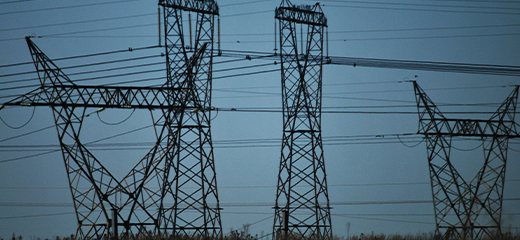
Understanding solar power's carbon footprint
Solar power is grabbing headlines with its potential to provide affordable, clean and renewable energy. However, it is not as environmentally friendly as you might think.
Given Eskom's rapidly escalating prices and unreliable electricity supply, it's not surprising that South Africans are interested in alternative energy sources. Nevertheless, we are certainly not alone in this interest and, in many cases, lag behind countries with more stable power supplies.
According to Our World in Data, worldwide electricity demand has increased by over 150% since 1985. And a recent report from the International Energy Agency (IEA) reveals global electricity demand surged by 6% in 2021 alone, placing power systems under strain around the world. Almost two-thirds of the world's electricity is generated from fossil fuels such as coal, natural gas and oil, while in South Africa fossil fuels amounted for 89% of power generation in 2021.
This reliance on fossil fuels for electricity has resulted in two significant problems. In the first instance, fossil fuels are a limited resource and growing demand has led to shortages in coal and natural gas supplies, sending these commodity prices soaring. This in turn has resulted in global electricity prices being pushed to record levels.
Growing demand has also exacerbated the second problem with fossil fuels: carbon dioxide (CO2) emissions. Our World in Data notes that three-quarters of global greenhouse gas emissions result from the burning of fossil fuels for energy which includes electricity, transport and heating. And coal is the world's "dirtiest fuel", it says, emitting the most CO2 per unit of energy and having severe impacts on health through air pollution.
Combatting climate change
The threat of climate change can no longer be denied and the world is targeting cleaner energy production to significantly reduce the burning of fossil fuels. Solar power has a large role to play in this fight: it is a renewable energy and the process of turning sunlight into usable energy produces no carbon emissions.
What's more, the IEA states that, along with wind, solar photovoltaics (PV) technology represents the cheapest available source of new electricity generation.
Solar panel pitfalls
Solar power is certainly promising, however, it's not all good news for the environment. While the energy produced is clean and renewable, the technology required to collect and convert sunlight into electricity is far from it. In fact, attention is increasingly being drawn to the carbon costs of manufacturing solar panels.
Solar panels are made up of a number of components and the mining, chemicals, manufacturing and transportation of the finished product do come at a considerable cost to the environment.
Another consideration is the environmental impact of disposal. Given the average lifespan of 25 to 30 years, countries are only now being faced with how to deal with the collection, component separation, recycling and disposal of panels that have reached end of life. It's a question that does need to be properly addressed; however, countries are likely to leverage their experience with technology disposal for an appropriate solution.
The net effect
To be fair to solar technology, it is impossible to create or set up an electricity generation facility without carbon emissions being created by construction, manufacturing, transportation and other elements.
In an effort to establish clarity on the carbon footprint of solar PV systems, the National Renewable Energy Laboratory in the US examined the published results of over 400 studies of solar PV. The research tracked emissions through the full life cycle from upstream processes required to produce the technology; through the operational phase; and including the downstream processes of decommissioning and disposal.
The results were noteworthy, particularly when compared to coal-fired power plants. When calculated against its full life cycle, solar PV emissions amount to 43 grams for every kilowatt-hour produced. Comparatively, coal emits 1001 grams of CO2 per kilowatt-hour, a staggering 2300% more than solar PV.
What's more, the average carbon payback period for solar PV is estimated to be between 1 and 2 years. Where a solar PV system will be positioned in this timeframe is influenced by a number of factors including variables such as the distance from manufacturing plant to customer, and the extent of access to direct sunshine once installed.
Nevertheless, it does mean that solar panels offer a good 23 years of carbon-free electricity generation.
For more information:
International Energy Agency, Electricity Market Report, January 2022
International Energy Agency, World Energy Outlook 2021
Our World in Data, Energy
National Renewable Energy Laboratory, Life Cycle Greenhouse Gas Emissions from Electricity Generation: Update
LookSee offers a full solar journey coupled with a Savings Guarantee based on your minimum saving expectations over 6 months and a once-off R2 000 cashback if savings are not met.









